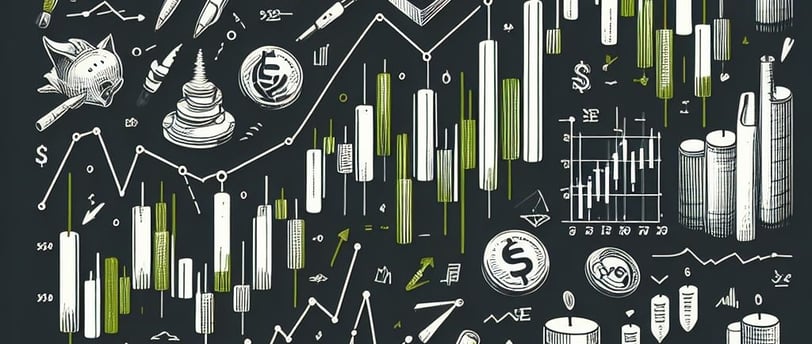The Significance of Aggregate Demand in Understanding the Economy
Explore the concept of aggregate demand and its components in macroeconomic analysis. Understand how consumption, investment, government spending, and net exports contribute to economic activity and learn about the role of fiscal and monetary policies in managing aggregate demand.


Aggregate demand is a fundamental concept in macroeconomic analysis that plays a crucial role in understanding the overall functioning of the economy. It represents the total amount of goods and services that households, businesses, government, and foreign buyers are willing and able to purchase at different price levels.
To comprehend the importance of aggregate demand, it is essential to examine its components, which include consumption, investment, government spending, and net exports. These components collectively determine the level of economic activity and provide insights into the factors that influence fluctuations in economic output and employment.
The Components of Aggregate Demand
1. Consumption
Consumption expenditure by households is a significant driver of aggregate demand. It encompasses the purchases of goods and services that individuals and families make to satisfy their needs and desires. Factors such as disposable income, consumer confidence, and interest rates influence consumption patterns.
When households have higher disposable income, they are more likely to spend on goods and services, thereby increasing aggregate demand. Consumer confidence, which reflects the optimism or pessimism about the future state of the economy, also plays a role in determining consumption levels. Additionally, interest rates impact consumption decisions, as lower interest rates encourage borrowing and spending.
2. Investment
Investment expenditure refers to the spending by businesses on capital goods, such as machinery, equipment, and structures. Investment is influenced by factors such as interest rates, business confidence, technological advancements, and expectations of future profitability.
Lower interest rates make borrowing more affordable, encouraging businesses to invest in new projects and expand their operations. Similarly, positive business sentiment and expectations of future profitability can lead to increased investment spending. On the other hand, economic uncertainty or unfavorable business conditions may discourage investment, leading to a decrease in aggregate demand.
3. Government Spending
Government spending represents the expenditure by the public sector on goods, services, and infrastructure projects. It includes spending on areas such as education, healthcare, defense, and public transportation. Government spending can have a significant impact on aggregate demand.
During times of economic downturn or recession, governments often increase their spending to stimulate economic activity and boost aggregate demand. This can be in the form of infrastructure projects, job creation programs, or increased social welfare spending. Conversely, during periods of economic expansion or inflationary pressures, governments may reduce spending to prevent overheating the economy.
4. Net Exports
Net exports represent the difference between a country's exports and imports. Positive net exports indicate that a country is exporting more than it is importing, contributing to aggregate demand. Conversely, negative net exports imply that a country is importing more than it is exporting, which can reduce aggregate demand.
Factors that influence net exports include exchange rates, trade policies, global economic conditions, and competitiveness of domestic industries. A weaker domestic currency can make exports more competitive and boost net exports, while a stronger currency can have the opposite effect.
The Role of Fiscal and Monetary Policies
Fiscal and monetary policies are crucial tools used by governments and central banks to manage aggregate demand and stabilize the economy.
Fiscal Policy
Fiscal policy refers to the use of government spending and taxation to influence aggregate demand. During periods of economic recession or low aggregate demand, governments can implement expansionary fiscal policies. This involves increasing government spending and/or reducing taxes to stimulate economic activity and boost aggregate demand.
Conversely, during periods of high inflation or excessive aggregate demand, governments may implement contractionary fiscal policies. This involves reducing government spending and/or increasing taxes to reduce aggregate demand and prevent overheating of the economy.
Monetary Policy
Monetary policy is conducted by central banks and involves the control of money supply and interest rates to influence aggregate demand. Central banks use tools such as open market operations, reserve requirements, and interest rate adjustments to manage monetary policy.
In times of low aggregate demand, central banks can implement expansionary monetary policies by reducing interest rates and increasing the money supply. Lower interest rates encourage borrowing and spending, thereby boosting aggregate demand. Conversely, during periods of high inflation or excessive aggregate demand, central banks may implement contractionary monetary policies by increasing interest rates and reducing the money supply to cool down the economy.
Conclusion
Understanding aggregate demand is crucial for comprehending the dynamics of the economy. By analyzing the components of aggregate demand—consumption, investment, government spending, and net exports—we can gain insights into the factors that drive economic fluctuations. Additionally, fiscal and monetary policies play significant roles in managing aggregate demand and maintaining economic stability. By utilizing these policy tools effectively, governments and central banks can influence aggregate demand and steer the economy towards sustainable growth.
